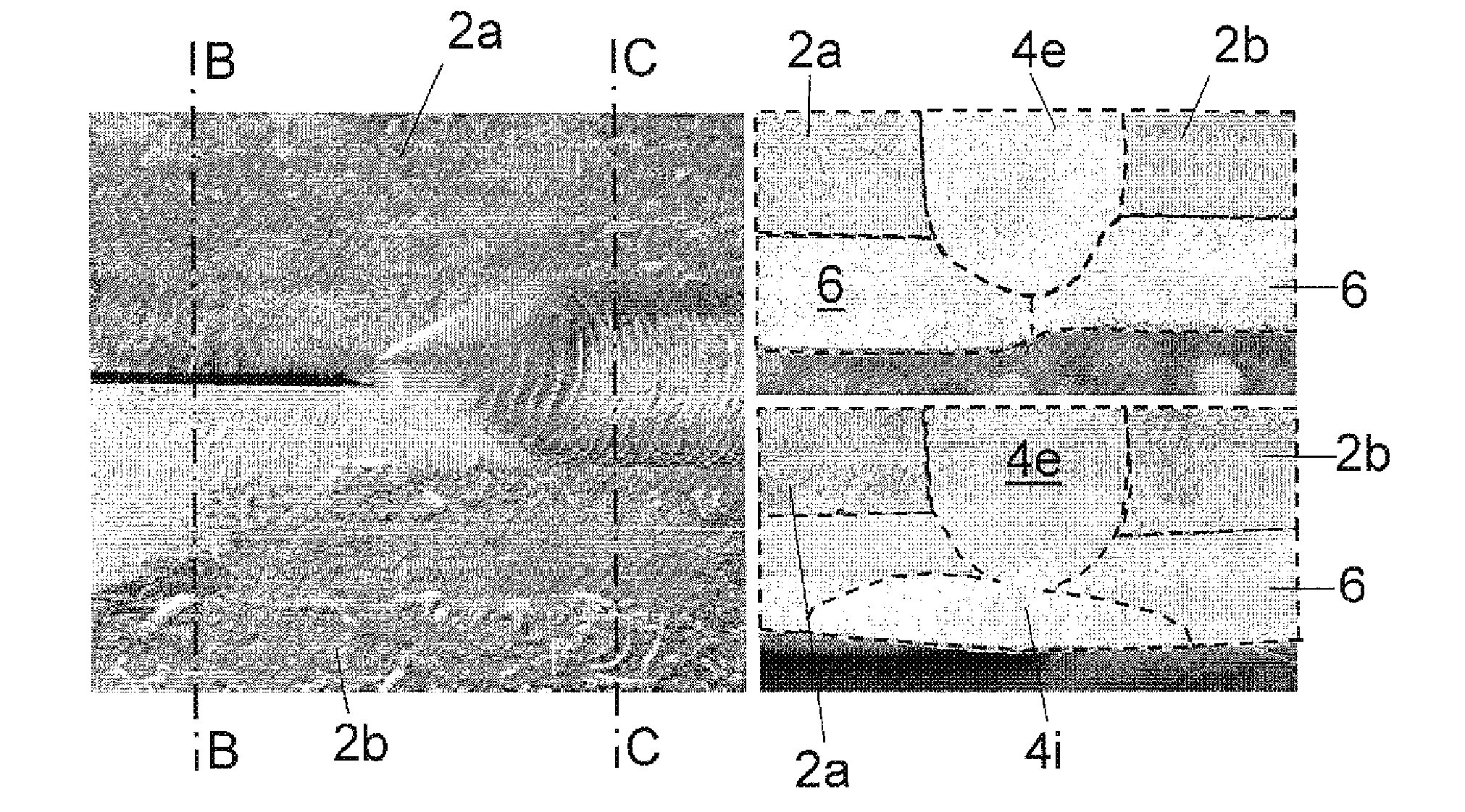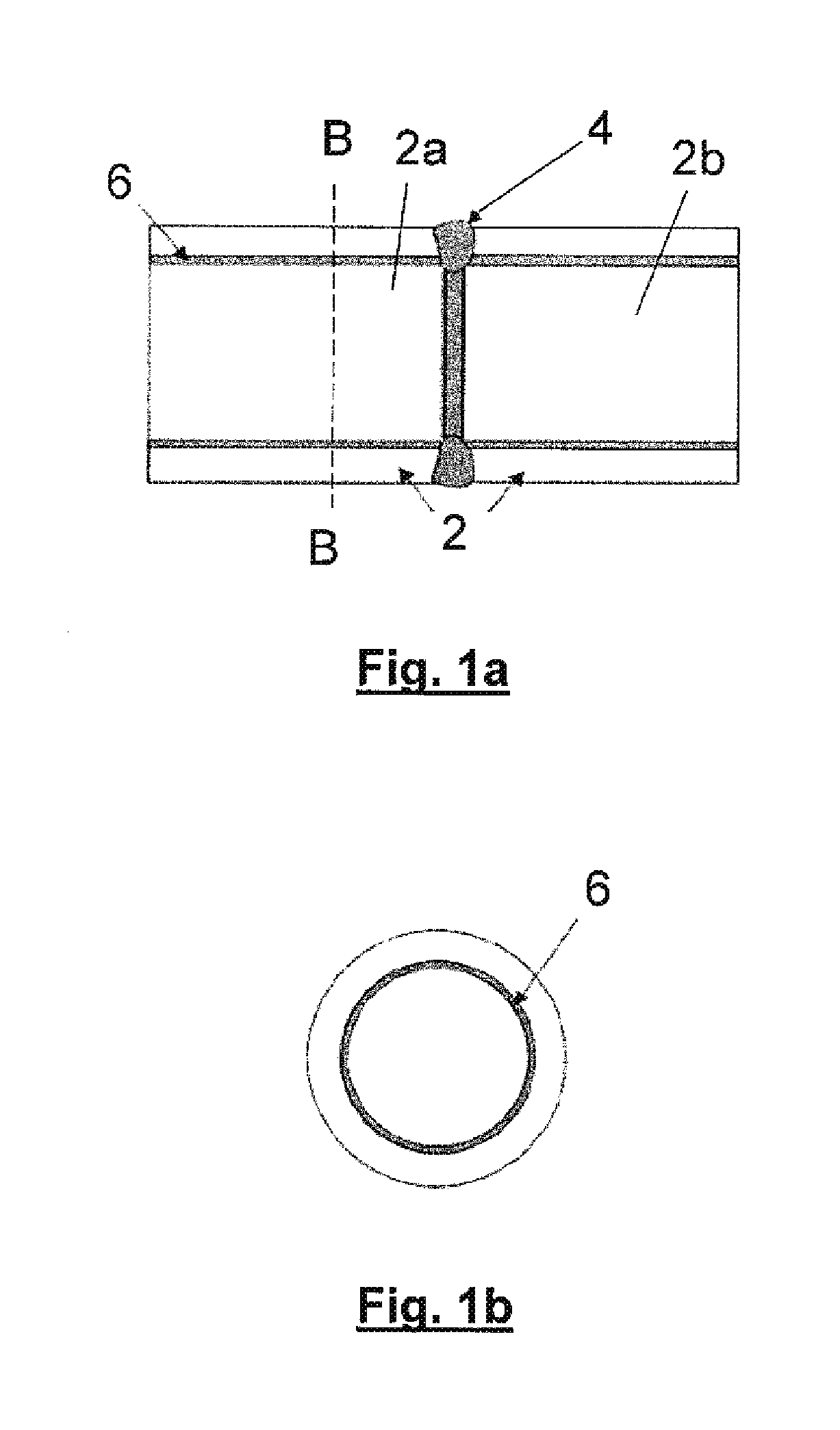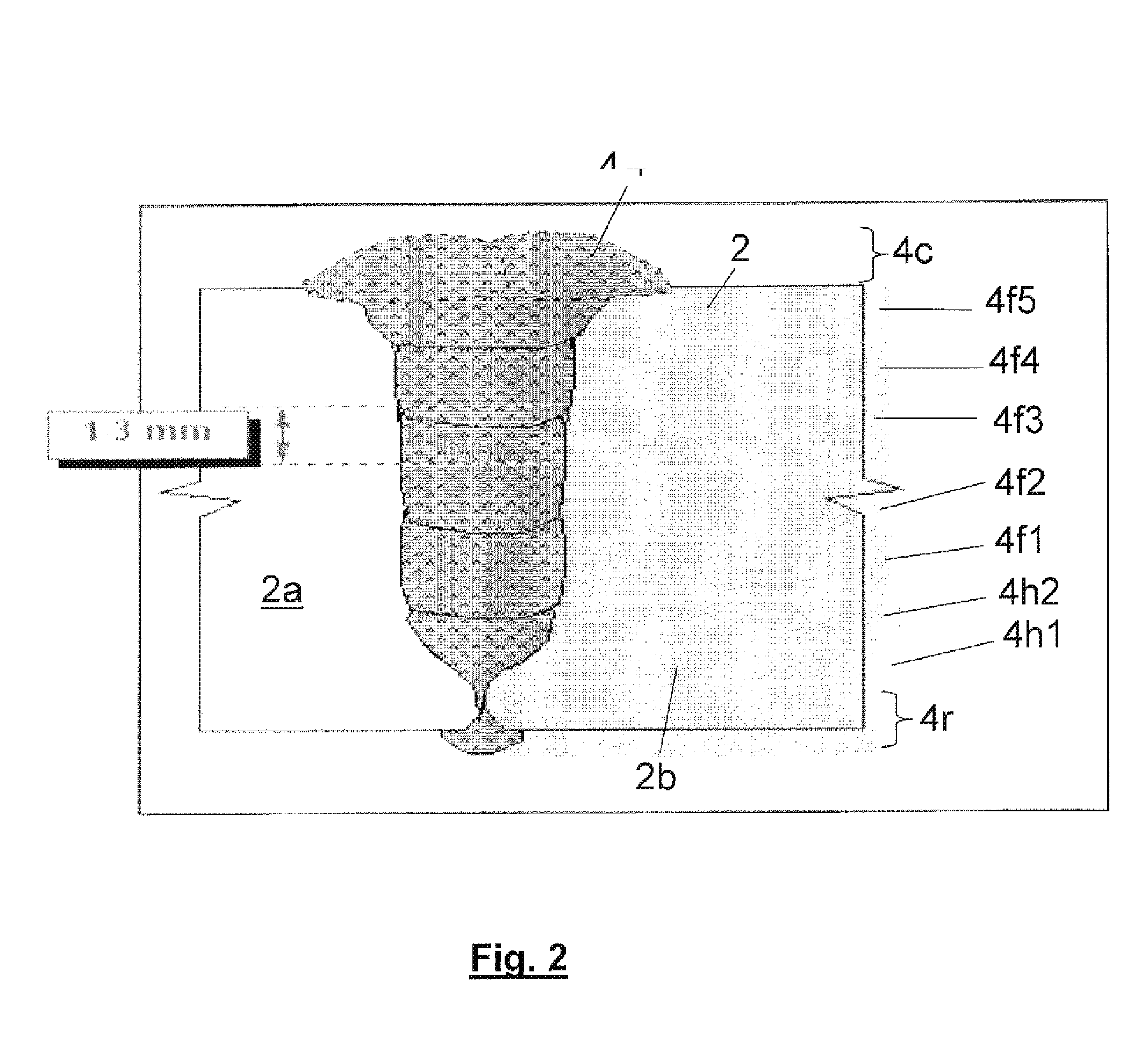Method of and a welding station for laying a pipeline, with pipe section welded together by internal and external welding
a welding station and pipe section technology, applied in the field of apparatus and methods for welding together clad pipe sections, can solve the problems of irregular, undesirable welds, difficult to achieve reliably, etc., and achieve the effect of improving overall weld quality and reducing the chance of welds
- Summary
- Abstract
- Description
- Claims
- Application Information
AI Technical Summary
Benefits of technology
Problems solved by technology
Method used
Image
Examples
Embodiment Construction
[0043]The presently described embodiment of the invention concerns the butt-welding together of Corrosion Resistant Alloy (CRA) clad pipe sections during a method of laying an underwater pipeline from a floating vessel. The pipeline is laid overboard a vessel by welding successive sections of pipe to the end of the pipeline. When laying a pipeline, the tension in the pipeline being laid is significant and is typically of the order of several hundreds of kilo-Newtons. During laying and subsequent use of the pipeline, the pipe joints may be subject to fatigue loading.
[0044]It is therefore of particular importance to ensure that the joints between the sections of pipe that make up the pipeline are of a very high quality. Failure of any joint in the pipeline after the joint has been lowered from the vessel into the water can be possibly dangerous and extremely costly.
[0045]FIG. 1a shows two pipe sections 2 in longitudinal cross-section. There is a first pipe section 2a connected to a se...
PUM
| Property | Measurement | Unit |
|---|---|---|
| Shape | aaaaa | aaaaa |
| Metallic bond | aaaaa | aaaaa |
| Corrosion resistance | aaaaa | aaaaa |
Abstract
Description
Claims
Application Information
 Login to View More
Login to View More - R&D
- Intellectual Property
- Life Sciences
- Materials
- Tech Scout
- Unparalleled Data Quality
- Higher Quality Content
- 60% Fewer Hallucinations
Browse by: Latest US Patents, China's latest patents, Technical Efficacy Thesaurus, Application Domain, Technology Topic, Popular Technical Reports.
© 2025 PatSnap. All rights reserved.Legal|Privacy policy|Modern Slavery Act Transparency Statement|Sitemap|About US| Contact US: help@patsnap.com



